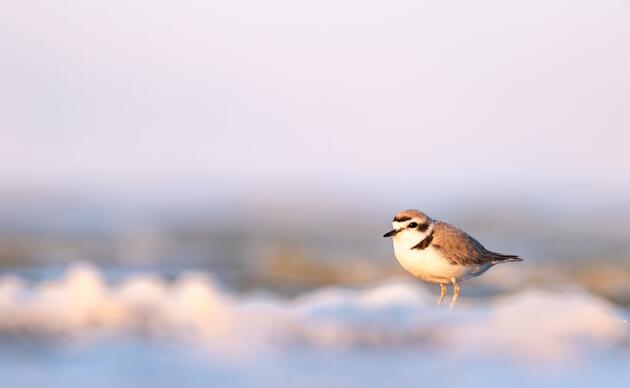
Any child who’s watched shorebirds scurry back and forth with the surf, prying open shells, turning over stones and probing deep into the sand or muck for tasty morsels, can tell you that these are fascinating birds. The vast array of feeding behaviors and morphologies found in shorebirds make them a rewarding area of study for adult researchers, too. Like Darwin’s Galapagos finches, millions of years of evolution have molded each of these species to specialize in a specific niche to reduce competition for prey in the wetland habitats they share. For that reason, multiple species of different sizes and foraging strategies can harmoniously occupy a single patch of shoreline and fuel up together for the next leg of a long migration.
Sandpipers, some of the smallest shorebird species, have long been known to consume a wide variety of invertebrates by probing the topmost layers of intertidal sediment with their short and flexible bills. However, we know now that they are also taking advantage of a food source less obvious to the naked eye. When scientists analyzed sandpiper stomach contents and watched video recordings of foraging birds, a diet of invertebrates alone could not explain what they saw. Looking for this missing link in the sandpiper diet, researchers found the birds were grazing on biofilm: a slimy substance formed by communities of bacteria, algae, and other tiny organisms that accumulates on intertidal sediment surfaces.
Sandpipers do this with tiny, brush-like spines that protrude from their tongues, more developed than those of larger shorebird species, to scoop up biofilm more efficiently while grazing, suggesting they evolved depending on biofilm as a critical part of their diet.
How much are these shorebirds relying on biofilm for nutrition? The smaller a bird’s body, the faster its metabolism and the larger its relative energy needs. A small sandpiper may eat prey equal to more than half its body weight in a day to sustain the high energy demands of migration. Western Sandpipers, which on average weigh only an ounce (around 28 grams), may take in as much as half their diet in the form of biofilm. Because biofilm is an abundant and easily accessible food source on intertidal flats, it's likely that many species benefit from it or even depend on it to acquire enough nutrition for migration.
Biofilm is nutritious substance packed with high energy molecules that power the long-distance migrations of these tiny shorebirds. For this reason, restoring intertidal wetlands and the conditions that promote biofilm growth should become a conservation priority, especially as climate change causes shifts in prey availability at important migration stopover sites.
Stories from the field and across the state
Shorebird paradises, on-the-ground science, and state-wide advocacy. Read more about how we're building a better future for all Californians and the birds that rely on our beautiful state.







